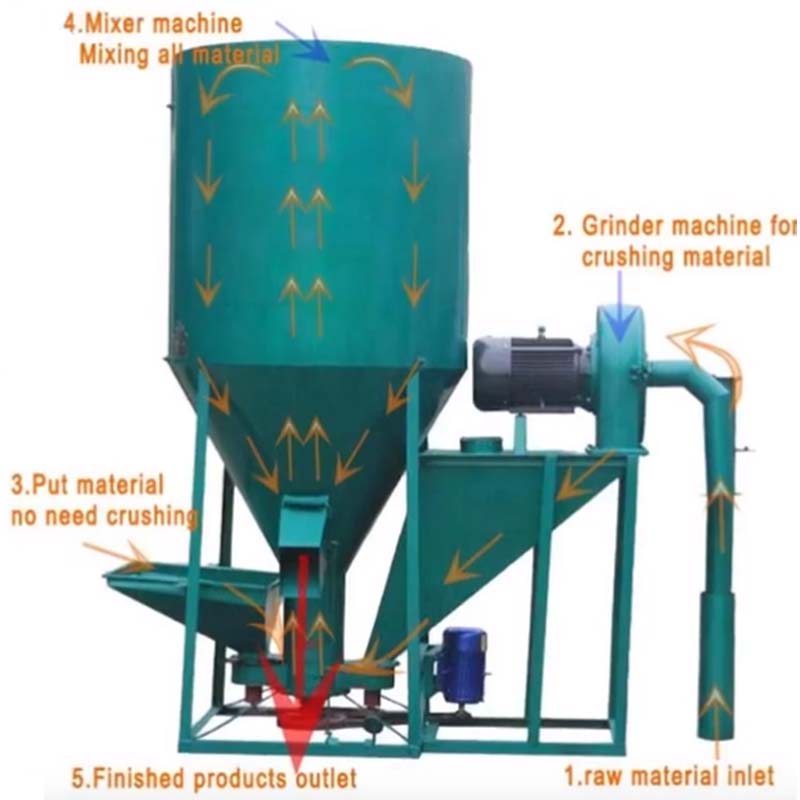Animal Feed Pellet Mill Machine - High Efficiency Feed Production
Sep . 12, 2024 02:02 Back to list
Animal Feed Pellet Mill Machine - High Efficiency Feed Production
Animal Feed Pellet Mill Machine Revolutionizing Animal Nutrition
In the world of agriculture, the efficient production of animal feed is crucial for the health and growth of livestock. One innovative solution that has emerged in recent years is the animal feed pellet mill machine. This sophisticated device has transformed the way feed is processed, enhancing both quality and efficiency.
At its core, a pellet mill machine works by compressing raw feed ingredients into small, dense pellets. These pellets are not only easier to handle and store than traditional feed, but they also provide several nutritional advantages. The pelleting process helps to reduce the size of feed particles and makes essential nutrients more accessible to animals. Moreover, the uniform shape and size of the pellets ensure consistent feeding, minimizing wastage and promoting better digestion.
The benefits of using a pellet mill machine extend to various types of livestock, including poultry, swine, cattle, and aquaculture species. For instance, poultry feed pellets can improve the growth rate and feed conversion efficiency of chickens and turkeys. Similarly, cattle benefit from pelleted feed that is easier to consume, leading to enhanced feed intake and overall health.
In addition to improving animal nutrition, the pellet mill machine is environmentally friendly. By reducing feed waste, it contributes to more sustainable farming practices. Farmers can create customized feed blends tailored to the specific needs of their animals, optimizing both performance and resource use.
animal feed pellet mill machine

The versatility of animal feed pellet mills is another significant advantage. These machines can process a variety of raw materials, including grains, legumes, and even by-products from other agricultural processes. This adaptability ensures that farmers can produce high-quality feed regardless of the available resources.
Furthermore, advances in technology have made modern pellet mills more automated and efficient. Many machines now come equipped with features like digital controls, which allow for precise adjustments to the pelleting process. This level of control not only enhances the quality of the pellets produced but also maximizes throughput, saving time and energy.
Investment in a pellet mill machine can also be financially beneficial for farmers. By producing their own feed, farmers can reduce costs significantly, especially in times of fluctuating commodity prices. Furthermore, the ability to produce high-quality feed can lead to improved animal performance, ultimately resulting in higher profits.
In conclusion, the animal feed pellet mill machine represents a significant advancement in livestock nutrition and farm management. By allowing for the efficient production of high-quality, customized feed, these machines contribute to healthier animals and more sustainable farming practices. As technology continues to evolve, the future of animal feed production looks promising, and pellet mills will undoubtedly play a pivotal role in addressing the challenges of modern agriculture.
-
Hot Sale 24 & 18 Door Rabbit Cages - Premium Breeding Solutions
NewsJul.25,2025
-
Automatic Feeding Line System Pan Feeder Nipple Drinker - Anping County Yize Metal Products Co., Ltd.
NewsJul.21,2025
-
Automatic Feeding Line System Pan Feeder Nipple Drinker - Anping County Yize Metal Products Co., Ltd.
NewsJul.21,2025
-
Automatic Feeding Line System - Anping Yize | Precision & Nipple
NewsJul.21,2025
-
Automatic Feeding Line System - Anping Yize | Precision & Nipple
NewsJul.21,2025
-
Automatic Feeding Line System-Anping County Yize Metal Products Co., Ltd.|Efficient Feed Distribution&Customized Animal Farming Solutions
NewsJul.21,2025






